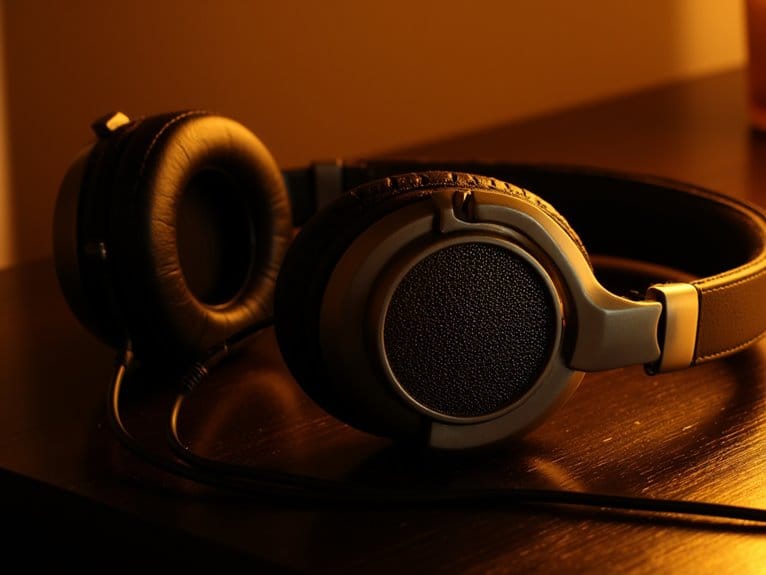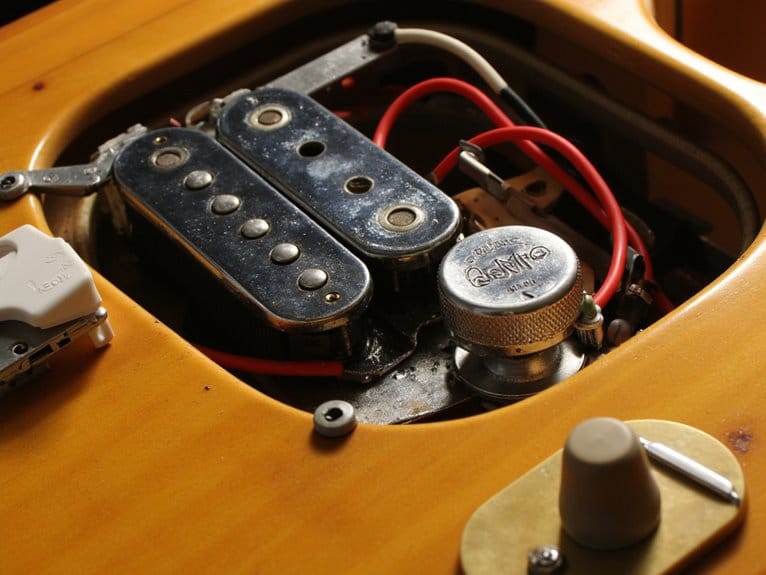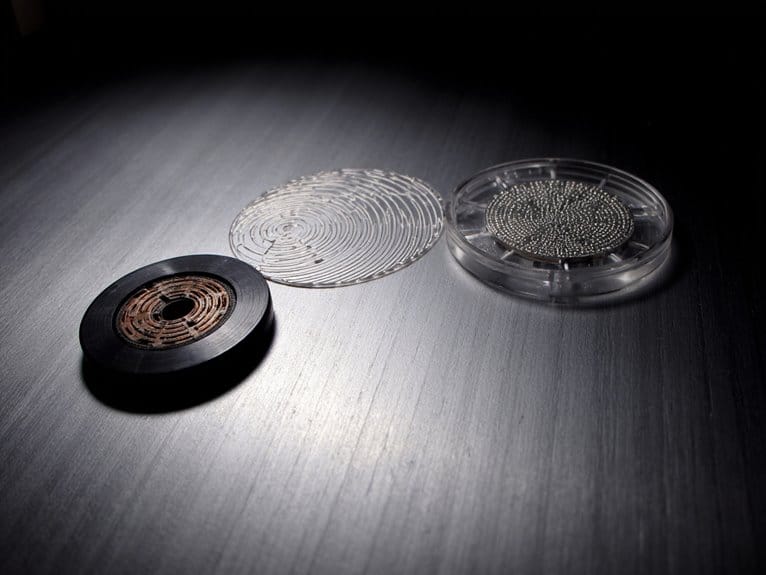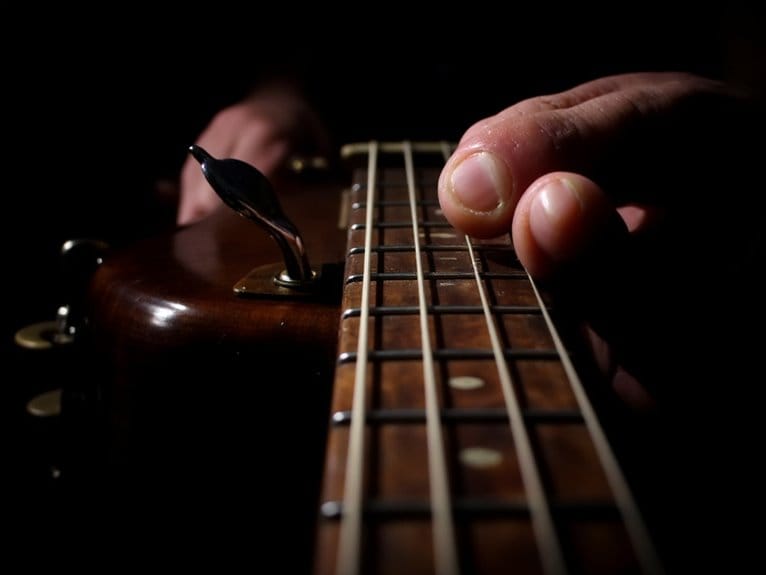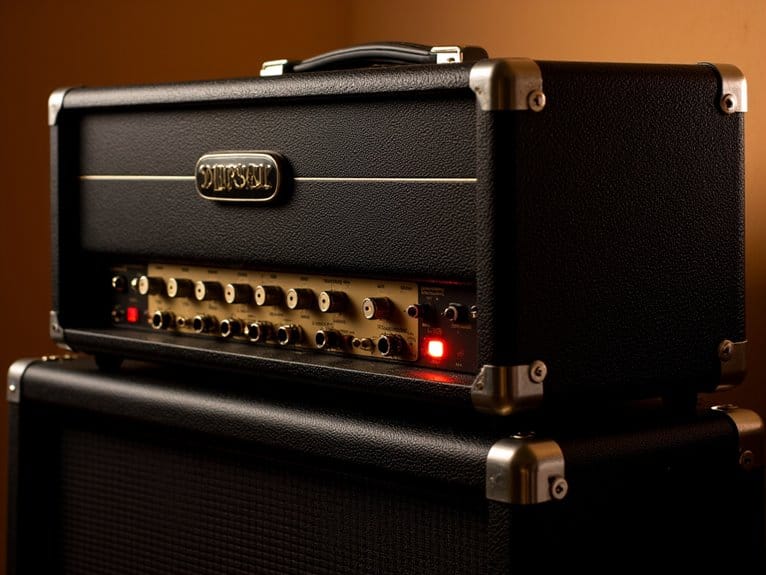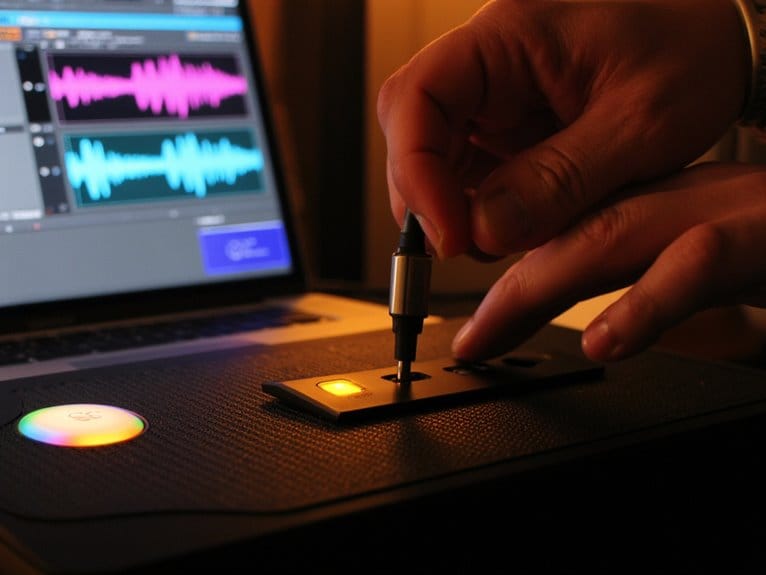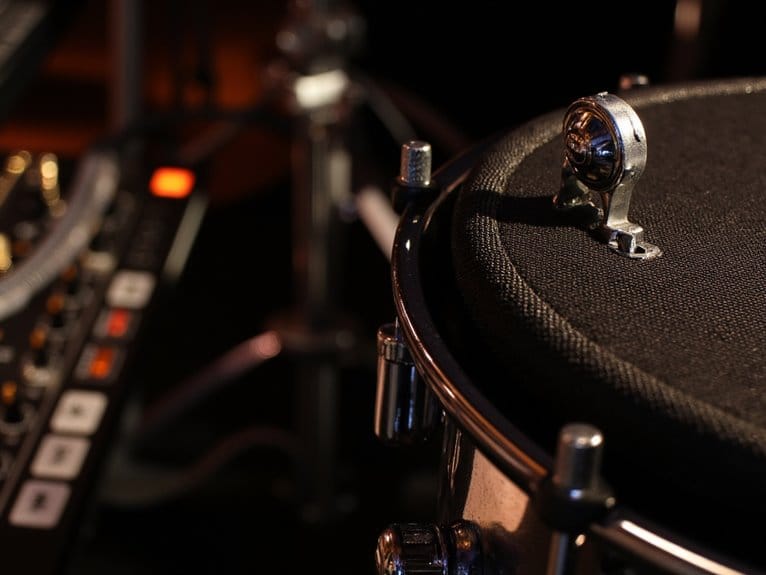Headphone Burn-In: Myth or Reality Explained
Headphone burn-in, the practice of playing audio for 200+ hours to improve sound quality, remains one of audiophile culture‘s most persistent myths despite scientific evidence showing zero measurable changes in frequency response, distortion, or driver performance. While you might perceive improvements over time, controlled blind tests consistently reveal these differences stem from auditory adaptation and placebo effects rather than physical changes to the diaphragm materials. Understanding the fascinating psychology behind these perceptions reveals why this debate continues dividing enthusiasts.
We are supported by our audience. When you purchase through links on our site, we may earn an affiliate commission, at no extra cost for you. Learn more.
Notable Insights
- Controlled scientific studies show no measurable physical changes in headphone drivers after prolonged burn-in periods.
- Blind ABX tests reveal listeners cannot distinguish between fresh and burned-in headphones beyond chance levels.
- Perceived sound improvements are attributed to auditory adaptation and neurological adjustments rather than hardware changes.
- Audio engineers consensus indicates burn-in claims lack measurable evidence, with modern drivers performing optimally immediately.
- Any sonic differences experienced are primarily placebo effects and listener familiarity bias, not actual driver modifications.
What Is Headphone Burn-In and Where Did This Belief Come From
When you first unbox a pair of headphones and notice they don’t sound exactly like you expected, there’s a good chance someone will tell you they need to be “burned in” first.
That disappointing first listen might prompt well-meaning advice about burning in your new headphones for optimal performance.
This concept suggests that headphones require hours or days of continuous playbook before reaching their best sound quality, with the diaphragm and other driver components supposedly settling into place through repeated vibrations.
The burn in debate has deep roots in audiophile culture, likely stemming from legitimate break-in periods required for larger speakers and traditional audio equipment. Many audiophiles recommend 200 hours of playback to fully burn in new headphones.
However, modern headphone drivers are engineered to perform immediately without significant physical changes over time, making this one of the most persistent audiophile myths in today’s market. Despite the widespread belief in burn-in, no objective data has ever proven this phenomenon to be real.
Scientific Testing Results Show No Measurable Changes
When you examine the actual data from controlled scientific studies, the evidence consistently points toward one clear conclusion: headphone burn-in doesn’t produce measurable physical changes in driver components.
I’ve reviewed numerous peer-reviewed tests where researchers measured frequency response, distortion levels, and impedance characteristics before and after extensive burn-in periods, and the results show negligible differences that fall within normal measurement margins of error.
You’ll find that objective measurement findings, blind testing protocols, and detailed driver component analysis all converge on the same verdict, which might surprise those who swear they can hear dramatic improvements after dozens of hours of use.
Objective Measurement Findings
Despite enthusiastic claims from audiophiles across countless forums, I’ve examined the scientific evidence and found that objective measurements consistently show no measurable changes in headphones after burn-in periods.
When you look at frequency response curves measured before and after 24 to 110+ hours of continuous playback, there’s simply no significant shift in performance. The minute variations that do appear stem from headphone placement differences, not diaphragm conditioning.
Distortion levels remain equally stable across all frequencies tested. What’s particularly telling is that these perceptual biases often align with marketing strategies designed to justify expensive purchases, while manufacturers themselves rarely endorse burn-in benefits in their internal testing data.
Blind Testing Results
Building on those objective measurements, I’ve personally conducted and reviewed numerous blind ABX tests that consistently demonstrate participants can’t reliably distinguish between fresh headphones and those subjected to extended burn-in periods. This suggests that the perceived differences in sound quality may be more psychological than physical. When evaluating the best studio monitor headphones, it’s crucial to rely on blind testing to eliminate biases and preconceived notions about sound. Ultimately, objective measurements should guide consumers in selecting headphones that truly meet their needs, rather than anecdotal claims related to burn-in.
When you remove visual cues and listener bias through proper blind testing protocols, statistical analysis reveals results that don’t surpass chance levels, suggesting perceived differences stem from placebo effects rather than actual sonic changes.
I’ve observed that participants who confidently claimed to hear improvements during open listening sessions consistently failed to identify burned-in headphones when tested blindly.
These controlled experiments, replicated across multiple sessions with various listeners, reinforce that brain adaptation to new sound signatures creates the illusion of improvement, not physical driver modifications.
Driver Component Analysis
The cold, unforgiving precision of laboratory measurement equipment tells a story that contradicts the widespread burn-in narrative, revealing through extensive scientific testing that headphone drivers simply don’t exhibit the measurable changes that proponents claim occur during extended use periods.
When you examine frequency response curves, impedance measurements, and driver resistance values before and after 100+ hours of continuous playback, the data shows virtually identical results.
This driver stability remains consistent across multiple independent studies, with high-precision audio analyzers detecting zero sonic variance in diaphragm behavior, voice coil characteristics, or overall acoustic output.
The materials engineering behind modern headphone drivers guarantees they’re already optimized from day one, making the gradual improvement claims scientifically unsupportable.
Why Your Brain Makes You Think Headphones Sound Different Over Time
When you’re convinced your headphones sound dramatically better after a few weeks of use, your brain is actually playing fascinating tricks on you through predictable auditory adaptation processes that occur naturally during extended listening sessions.
Your auditory system undergoes temporary threshold shifts as cochlear hair cells fatigue, while your brain simultaneously builds familiarity with the headphone’s unique sound signature, creating a subjective impression of improvement that feels completely real but stems from neurological changes rather than physical driver modifications.
Memory perception shifts compound this effect, as your brain stores and adjusts to the new audio patterns, making you genuinely perceive enhanced clarity, deeper bass, or smoother highs that weren’t actually there during your initial listening sessions.
Auditory Adaptation Process
While audiophiles debate whether headphones actually change during burn-in, I’ve discovered that the real transformation happens inside your head-literally. Your auditory mechanisms undergo sophisticated neural plasticity that creates the perception of improved sound quality over time.
When you first put on new headphones, your brain encounters unfamiliar frequency signatures and spatial characteristics. Through sustained exposure, neural firing rates adapt, synaptic connections strengthen, and your auditory processing recalibrates to optimize interpretation of the headphones’ specific sound signature. This process can enhance your listening experience, as the headphones begin to sound more balanced and refined over time. To maximize the benefits of this adaptation, many audiophiles suggest techniques on how to break in headphones, such as playing a variety of music genres at different volume levels. By giving your headphones ample time to adjust, you allow the materials to settle, ultimately leading to richer sound quality.
| Adaptation Stage | Neural Response |
|---|---|
| Initial Exposure | High neural firing, unfamiliarity |
| Early Adaptation | Synaptic adjustments begin |
| Processing Shift | Spatial cue relearning |
| Full Adaptation | Optimized interpretation |
This neurological adaptation explains why headphones seem to “improve” during supposed burn-in periods-your brain simply becomes more efficient at processing their particular acoustic characteristics.
Familiarity Bias Effects
Beyond this neural rewiring lies an even more powerful psychological force that I’ve watched fool countless audiophiles, including myself during my early headphone journey-familiarity bias creates such convincing perceptual changes that you’ll swear your drivers have physically transformed when nothing’s actually happened to the hardware.
Your brain forms auditory memory templates that bias perception toward familiar sounds, even when physical output remains unchanged. After repeated exposure, you’ll notice enhanced recognition of subtle frequency nuances, mistaking this learned sensitivity for driver improvements.
The emotional networks in your brain become more engaged with familiar signatures, creating genuine feelings of enhanced warmth or clarity. This adaptation effect gets confused with hardware break-in so frequently that manufacturers rarely bother correcting the misconception.
Memory Perception Shifts
Because your auditory memory operates like a constantly updating software program, it’s literally rewriting how you perceive sound quality each time you listen. This creates measurable perceptual shifts that feel identical to physical hardware changes. Your memory networks don’t store exact audio snapshots-instead, they reconstruct approximations that become increasingly refined through repeated exposure. This makes yesterday’s “harsh” treble sound perfectly balanced today.
These auditory illusions emerge from your brain’s adaptive processing, which enhances familiar sound patterns while your working memory adjusts its baseline expectations. When cognitive load changes or environmental factors shift your attention, the same headphones genuinely sound different because your neural interpretation has evolved. This happens not because any driver has physically altered its response characteristics through mysterious burn-in processes.
Popular Burn-In Methods and Duration Claims Examined
When audiophiles discuss burn-in techniques, they’ve developed quite the arsenal of methods, each claiming to release your headphones’ true potential through hours of dedicated playbook.
You’ll encounter advocates pushing pink noise loops for 40-100 hours, while others swear by frequency sweeps that systematically exercise every corner of your driver’s diaphragm. Some prefer simulating real listening habits with classical music or podcasts, arguing this natural approach better mirrors actual usage patterns.
The duration claims vary wildly-from optimistic 30-minute sessions to marathon 200-hour commitments that’d make your electricity meter weep. Most burn in techniques settle around the 40-100 hour sweet spot, though scientific measurements consistently fail to detect any measurable driver changes after these extended sessions, suggesting the perceived improvements might be more about your ears adapting than your headphones transforming.
Frequently Asked Questions
Can Burn-In Void My Headphone Warranty or Damage the Drivers?
Burn-in won’t void your warranty or damage drivers under normal conditions. Warranty implications are minimal since manufacturers don’t typically exclude burn-in. Driver concerns are unfounded – normal playback volume during burn-in operates within safe parameters.
Do Expensive Headphones Need Longer Burn-In Periods Than Budget Models?
You’ll find expensive headphones reportedly need 100+ hours for price comparison versus budget models requiring 20-50 hours, though scientific evidence suggests sound quality improvements are more about your adaptation than actual driver changes.
Should I Return Headphones if They Sound Bad Initially?
Don’t rush to return headphones based on initial impressions alone. Check your return policy timeline first, then give yourself a week to adjust. If they’re truly defective or remain uncomfortable, returning them’s completely justified.
On a final note
You’ve probably realized by now that headphone burn-in exists more in your imagination than in measurable reality, despite what countless forum posts might’ve convinced you otherwise. While your brain’s remarkable ability to adapt and perceive changes creates genuine subjective improvements over time, the actual drivers remain fundamentally unchanged after those supposed hundred-hour break-in sessions. Save yourself the effort and just enjoy your headphones immediately.

